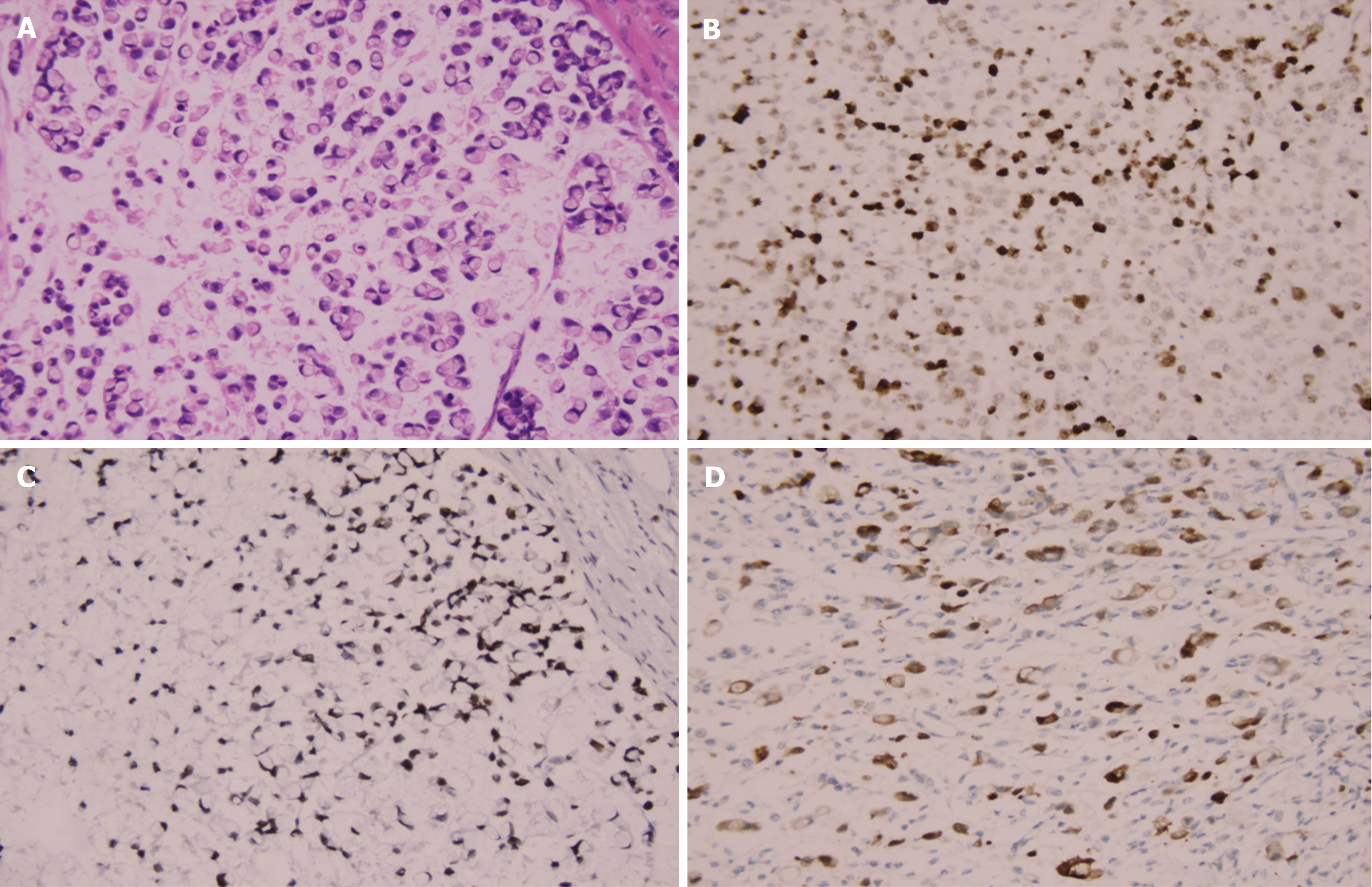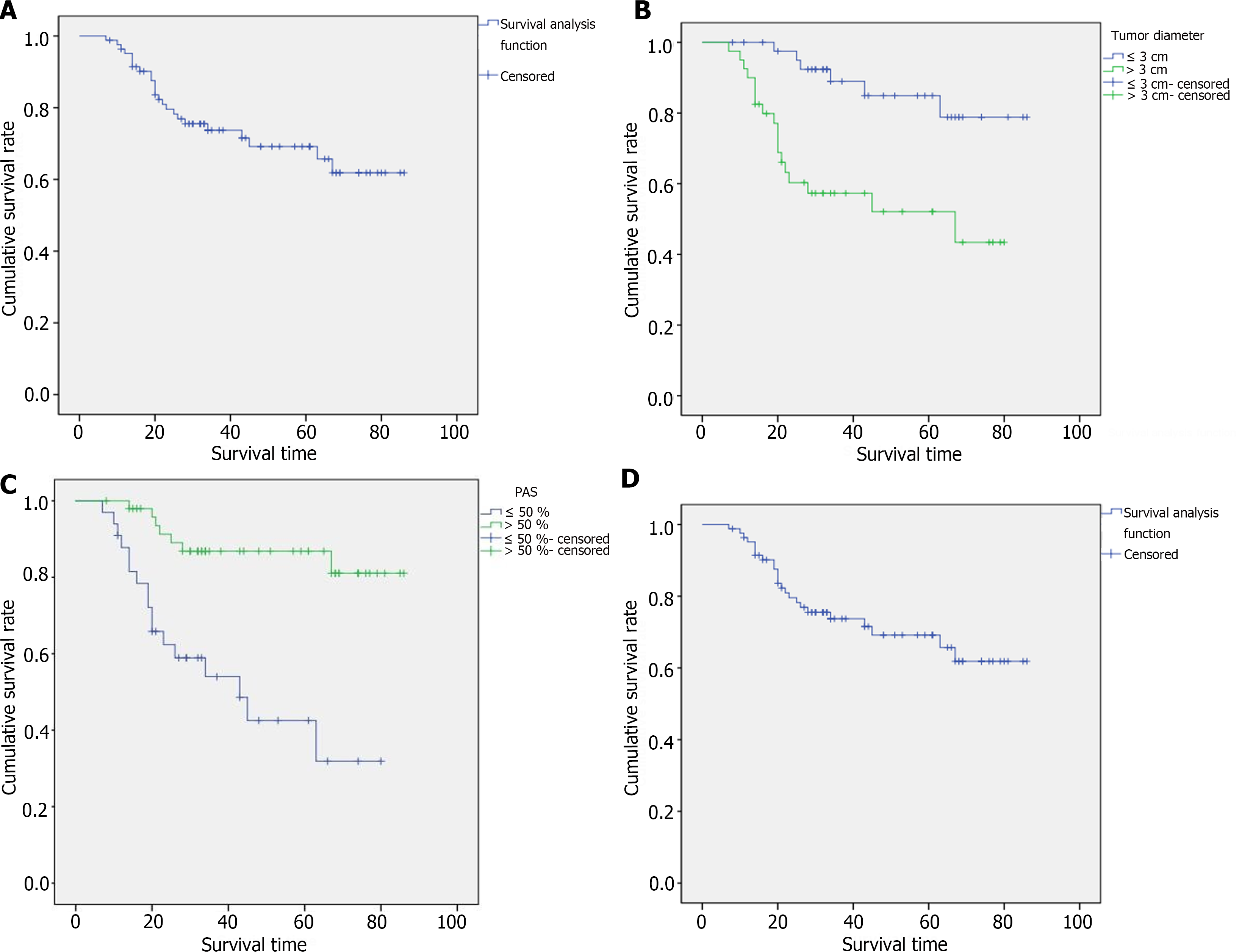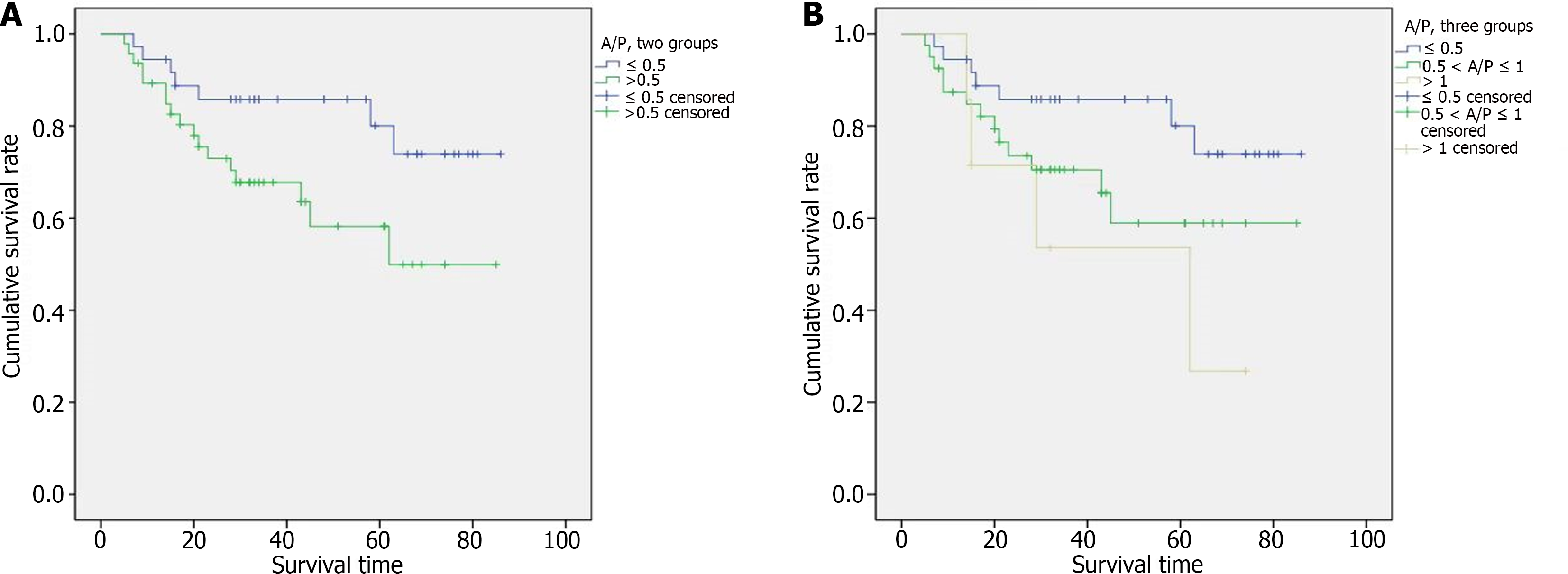Copyright
©The Author(s) 2024.
World J Gastrointest Oncol. Mar 15, 2024; 16(3): 687-698
Published online Mar 15, 2024. doi: 10.4251/wjgo.v16.i3.687
Published online Mar 15, 2024. doi: 10.4251/wjgo.v16.i3.687
Figure 1 Flowchart of the patients included in our study with gastric signet ring cell carcinoma.
WHO: World Health Organization.
Figure 2 Immunohistochemical and hematoxylin-eosin staining of gastric signet ring cells.
A: Classical signet ring cells stained by hematoxylin-eosin; B: Ki67-positive signet ring cells; C: Protein 53-positive signet ring cells; D: Human epidermal growth factor receptor 2-positive signet ring cells.
Figure 3 Alcian blue and periodic acid-Schiff staining showing positivity for signet ring cells.
A and B: Periodic acid-Schiff-positive signet ring cells were stained prominently purplish red; C and D: Alcian blue-positive signet ring cells were stained bluish green.
Figure 4 Cancer-specific survival in the different groups.
A: 3-year cancer-specific survival (CSS) of all patients with gastric signet ring cell carcinoma (SRCC); B: 3-year CSS of all patients grouped according to tumor diameter (P = 0.002); C: 3-year CSS of all patients grouped according to the degree of periodic acid-Schiff (PAS) expression (P = 0.000); D: 3-year CSS of patients with SRCC in an advanced stage grouped according to the degree of PAS expression (P = 0.003). PAS: Periodic acid-Schiff.
Figure 5 Cancer-specific survival of patients in different groups according to the alcian blue-to-periodic acid Schiff ratio.
A: 3-year cancer-specific survival (CSS) of patients with signet ring cell carcinoma grouped according to alcian blue-to-periodic acid Schiff ratio (A/P) divided into two groups (P = 0.042); B: 3-year CSS of patients grouped according to A/P divided into three groups (P = 0.067). A/P: Alcian blue-to-periodic acid Schiff ratio.
- Citation: Lin J, Chen ZF, Guo GD, Chen X. Impact of Alcian blue and periodic acid Schiff expression on the prognosis of gastric signet ring cell carcinoma. World J Gastrointest Oncol 2024; 16(3): 687-698
- URL: https://www.wjgnet.com/1948-5204/full/v16/i3/687.htm
- DOI: https://dx.doi.org/10.4251/wjgo.v16.i3.687













